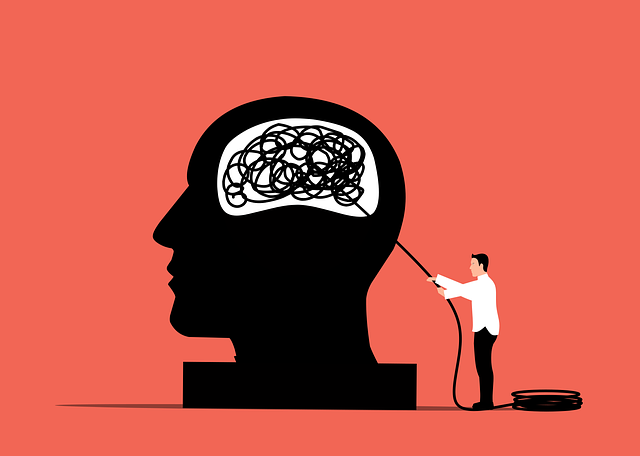Emerging therapies like Transcranial Magnetic Stimulation (TMS), Virtual Reality Therapy (VRT), and digital health interventions are revolutionizing adolescent depression treatment. TMS offers a safe, non-invasive brain stimulation option for conventional method failures. Digital tools provide accessible, personalized care at home, breaking barriers to mental health support. Integrated care models combining traditional therapy with online CBT platforms and mobile apps significantly reduce depressive symptoms in teens, with emerging techniques like neurofeedback and mindfulness-based therapies enhancing coping skills and long-term mental wellness.
The landscape of adolescent depression treatment is evolving rapidly, driven by emerging therapies, digital innovations, and a growing emphasis on community engagement. This article delves into four key areas that promise significant advancements in mental wellness for teens:
1. Emerging Therapies: Exploring powerful tools like Transcranial Magnetic Stimulation (TMS), Virtual Reality Therapy (VRT), and Neurofeedback.
2. Digital Health Solutions: Highlighting the rise of online platforms, apps, and wearable devices tailored to teen needs, enhancing accessibility and personalized care.
3. Community Engagement: Discussing school-based interventions, peer support, and community outreach in fostering early intervention and reducing stigma.
4. Personalized Medicine: Delving into the future of treatments based on individual genetic profiles, with precision psychiatry aiming for improved outcomes.
Emerging Therapies for Adolescent Depression
Emerging therapies are reshaping the landscape of adolescent depression treatment, offering new hope for young minds grappling with this profound mental health issue. One such innovation is Transcranial Magnetic Stimulation (TMS), a non-invasive procedure that uses magnetic fields to stimulate specific brain regions associated with mood regulation. TMS has shown promise in treating major depressive disorder, particularly when other treatments haven’t been effective. It’s a relatively safe and well-tolerated option, making it an exciting prospect for adolescents who may be hesitant or resistant to traditional therapies.
Another promising area of focus is digital health interventions, leveraging technology to provide accessible and personalized adolescent depression treatment. Mobile apps, virtual reality therapy (VRT), and online platforms equipped with artificial intelligence can deliver tailored support, cognitive-behavioral techniques, and peer connections, breaking down barriers to care. These tools offer flexibility and discretion, allowing teens to engage in their mental wellness journey at their own pace, from the comfort of their homes.
– Explore innovative treatment approaches like transcranial magnetic stimulation (TMS), virtual reality therapy (VRT), and neurofeedback.
In the pursuit of enhanced adolescent depression treatment, innovative therapeutic approaches are emerging as promising avenues for mental wellness. Techniques such as Transcranial Magnetic Stimulation (TMS) offer a non-invasive method to stimulate specific brain regions associated with mood regulation, providing an alternative to traditional medication and psychotherapy. Virtual Reality Therapy (VRT) immerses patients in carefully crafted environments, enabling them to confront and manage depressive symptoms in a controlled setting. This technology has proven effective in exposure therapy, helping teens face their fears and anxieties in a safe virtual space.
Another cutting-edge technique gaining traction is neurofeedback, which involves training individuals to regulate their brain activity through real-time visual or auditory feedback. By teaching them to control neural patterns linked to depression, neurofeedback empowers teens with self-management skills, potentially reducing reliance on external interventions. These advancements in adolescent depression treatment hold great potential for personalizing and improving care, catering to the unique needs of each individual.
– Discuss the potential benefits and current research supporting these methods.
In the realm of adolescent depression treatment, future advancements promise to revolutionise mental wellness support for teens. Emerging research highlights the potential of integrated care models combining therapy with digital interventions. These innovative approaches show promising results in improving access, engagement, and outcomes for young people struggling with depression. For instance, studies have demonstrated that online platforms offering cognitive-behavioural therapy (CBT) can significantly reduce depressive symptoms, particularly when combined with mobile apps tracking mood and behaviour.
Additionally, neurofeedback and mindfulness-based therapies are gaining traction as evidence-based treatments. Neurofeedback trains individuals to regulate brain activity, offering a non-invasive way to manage depression. Mindfulness practices, integrated into therapy sessions, help teens cultivate present-moment awareness and emotional resilience. Current research suggests these methods enhance coping skills, promote self-regulation, and contribute to long-term mental wellness, making them valuable additions to the adolescent depression treatment landscape.
Digital Health Solutions and Online Platforms
In the digital age, technology offers innovative solutions for adolescent depression treatment and mental wellness support. Digital health platforms and online tools are revolutionizing access to care, providing teens with convenient and accessible resources. These solutions include mobile apps designed to monitor mood, track symptoms, and offer personalized coping strategies, all within a secure digital environment.
Online therapy sessions facilitated by video conferencing and artificial intelligence-driven chatbots enable teens to receive professional support from the comfort of their homes. This shift towards digital interventions addresses common barriers to traditional mental health care, such as stigma, cost, and geographical constraints. By leveraging technology, these platforms aim to improve engagement and adherence in adolescent depression treatment, ultimately enhancing overall mental wellness outcomes for young individuals.
The future of adolescent depression treatment looks promising with emerging therapies like TMS, VRT, and neurofeedback showing significant potential. Digital health solutions and online platforms further enhance access to care, enabling personalized and accessible mental wellness support for teens. As research continues to evolve, these innovative approaches could revolutionize how we address and manage adolescent depression, offering hope for a brighter and healthier future.
